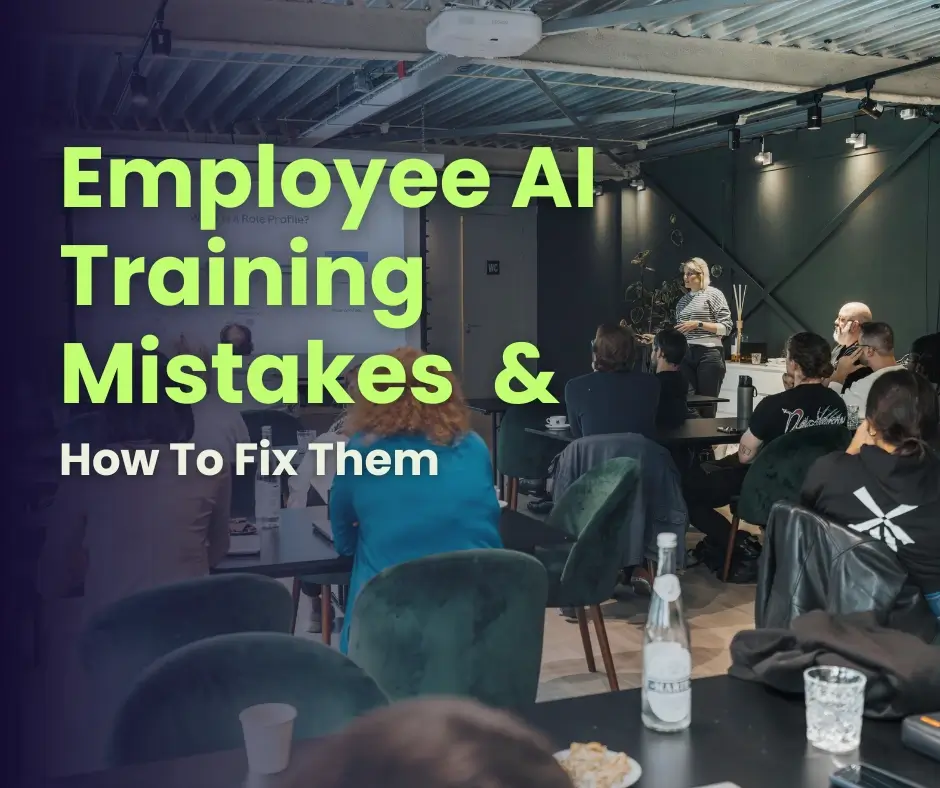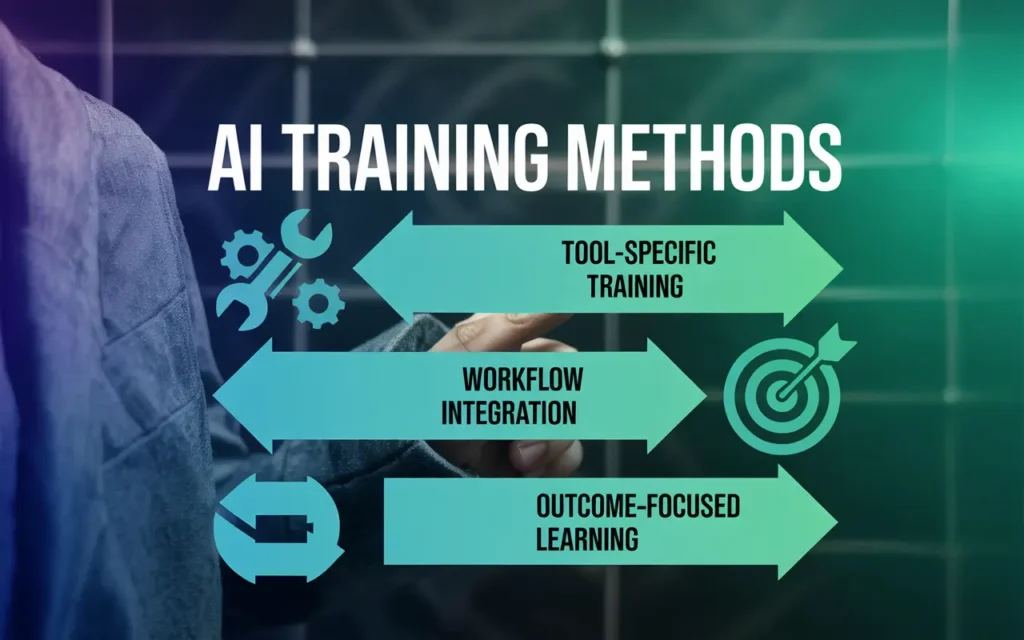
Earlier this year, McKinsey dropped a bombshell that should terrify every business leader: 78% of organizations use AI in at least one function, yet only 1% have achieved AI maturity.
That’s not a skills gap. That’s a canyon.
And it’s creating the biggest training opportunity since the internet revolution.
The global employee training market just hit $352.66 billion and is growing at 11.7% annually. But here’s what most people miss: this isn’t just about training anymore. It’s about survival.
In this deep dive, I’ll show you exactly what’s driving this transformation, why most companies are failing spectacularly at employee development, and the specific strategies that are actually working in 2025.
Let’s break it down.
Why Employee Training Just Became Your Most Critical Business Function
The numbers tell a brutal story.
40% of your workforce will need reskilling within three years because of AI implementation. The World Economic Forum calls it a “reskilling emergency” requiring upskilling of 1+ billion people by 2030.
But here’s the twist: companies that invest in comprehensive training programs are seeing higher income per employee than those that don’t.
IBM achieves $3 return for every training dollar invested. AT&T generated a 25% revenue increase over five years from a $250M training investment.
Meanwhile, 94% of employees would stay longer at companies that invest in their development.
The message is clear: train or lose talent. Train or fall behind. Train or die.
The AI Training Crisis: Why Everyone’s Doing It Wrong
Here’s where it gets interesting.
Most companies are approaching AI training like it’s 2010. Long PowerPoint presentations. Theoretical concepts. Zero practical application.
LinkedIn Learning reported a 65% increase in learning hours for top AI courses, but 75% of marketing professionals still lack formal AI education access at their companies.
The problem? Companies are teaching AI like it’s a subject instead of a tool.
PwC deployed ChatGPT Enterprise to 100,000+ employees and saw immediate results. Microsoft 365 Copilot integration is driving substantial productivity gains in software development and improvements in finance functions.
The difference? They focused on practical, hands-on application rather than theoretical knowledge.

The Three Types of AI Training That Actually Work:
1. Tool-Specific Training – Instead of “Introduction to AI,” teach “How to Save 3 Hours Daily with ChatGPT in Your Role.”
2. Workflow Integration – Show exactly how AI fits into existing processes, not how to use AI in isolation.
3. Outcome-Focused Learning – Measure success by business results, not completion rates.
The Southeast Asian Training Boom: A $2.46 Billion Opportunity
While everyone’s focused on Silicon Valley, Southeast Asia quietly became the fastest-growing training region at 11.2% CAGR.
Malaysia’s training market hit MYR 1.8 billion with strong government HRDF support. Singapore provides S$10,000 business credits through SkillsFuture. Thailand allocated millions for AI initiatives.
Why does this matter? Because these markets are hungry for practical AI training and have government funding to pay for it.
The opportunity is massive, but it requires understanding local nuances:
- Hierarchy respect in training delivery
- Face-saving approaches to skill development
- Relationship-first business culture
- Consensus-building in learning programs
The Hybrid Training Formula That’s Crushing Traditional Methods
Remember when everyone said virtual training was inferior? The data proves otherwise.
- Hybrid approaches combining 70% digital with 30% live sessions consistently outperform single-modality training.
- Microlearning delivers 17-25% better knowledge retention with 80-82% completion rates compared to 20% for long-form modules.
But here’s the secret sauce: gamification integration drives 130% engagement increases, while VR-based training increases learner confidence by 275%.
The Perfect Training Recipe:
5-7 minute modules + immediate feedback loops + single learning objectives + practical application = training that actually sticks.
Mobile-enabled microlearning achieves 45% faster completion rates and 45% higher retention than traditional face-to-face learning.
Industry-Specific Training: Why One Size Fits Nobody
Pharmaceutical companies spend 60-70% of training budgets on regulatory compliance. 21 CFR 211.25 mandates comprehensive training for all manufacturing personnel.
FMCG companies focus on AI and automation adoption, with 60% of activities expected to be automated.
Retail emphasizes omnichannel customer experience training and rapid onboarding solutions for high-turnover environments.
The lesson? Generic training programs fail. Industry-specific, role-based training wins.
The Training Segmentation That Works:
Executive Training (10% of budgets, $2,500+ per person):
- Strategic AI integration
- Cross-functional leadership
- Transformation management
Employee Training (41% of budgets, $774 average per learner):
- Tool proficiency
- Workflow optimization
- Practical application
The ROI Measurement Framework That Actually Matters
Most companies measure training success by completion rates. That’s like measuring marketing success by email open rates.
Successful training programs demonstrate 300-400% ROI through systematic measurement of:
- Engagement Metrics: 80-82% completion rates for well-designed programs
- Knowledge Retention: 17-25% improvement over traditional methods
- Business Impact: 20-50% productivity gains in target areas
- Long-term Outcomes: 30-50% higher retention rates
Companies with comprehensive training earn 218% higher income per employee than those without.
The measurement framework that actually works:
- Pre-training baseline – Current performance metrics
- Learning indicators – Engagement and completion data
- Application metrics – How skills transfer to work
- Business results – Revenue, productivity, retention impact

The Future of Employee Training: What’s Coming Next
AR/VR training market growth from $22.56 billion to $82.92 billion by 2034 tells us where this is heading.
AI-powered personalization is becoming standard. Voice-activated learning and mobile-first design are table stakes.
But the real transformation? 170 million new jobs creation by 2030 means continuous training becomes a business necessity, not a nice-to-have.
The Skills Triad Driving All Future Training:
1. Carbon Intelligence – Sustainability expertise
2. Virtual Intelligence – Remote work mastery
3. AI Proficiency – Human-AI collaboration
Companies that master these three areas will dominate their industries. Those who don’t will struggle to compete.
Your Next Steps: Building a Training Program That Actually Works
Based on everything we’ve covered, here’s your action plan:
Phase 1: Assessment (Month 1)
- Audit current skills vs. required skills
- Identify highest-impact training opportunities
- Calculate potential ROI for different programs
Phase 2: Pilot Program (Months 2-3)
- Launch small-scale training with measurement systems
- Focus on one specific outcome (e.g., AI tool adoption)
- Gather feedback and refine approach
Phase 3: Scale (Months 4-6)
- Expand successful pilots across organization
- Implement comprehensive measurement framework
- Begin industry-specific customization
Phase 4: Optimization (Ongoing)
- Continuous improvement based on business results
- Advanced technology integration (VR, AI personalization)
- Strategic planning for future skills needs
The Bottom Line
The employee training market isn’t just growing—it’s transforming.
AI adoption, hybrid work models, and accelerating skills gaps create unprecedented opportunities for organizations that approach training strategically.
The companies that invest in practical, measurable, outcome-focused training will capture market share from those clinging to outdated approaches.
The question isn’t whether you need better employee training. The question is whether you’ll implement it before your competitors do.
What’s your training strategy for 2025?
Want to dive deeper into building a revenue-generating training program? I help companies scale their workforce development initiatives with measurable business results. Book a strategy session here to discuss your specific needs.

